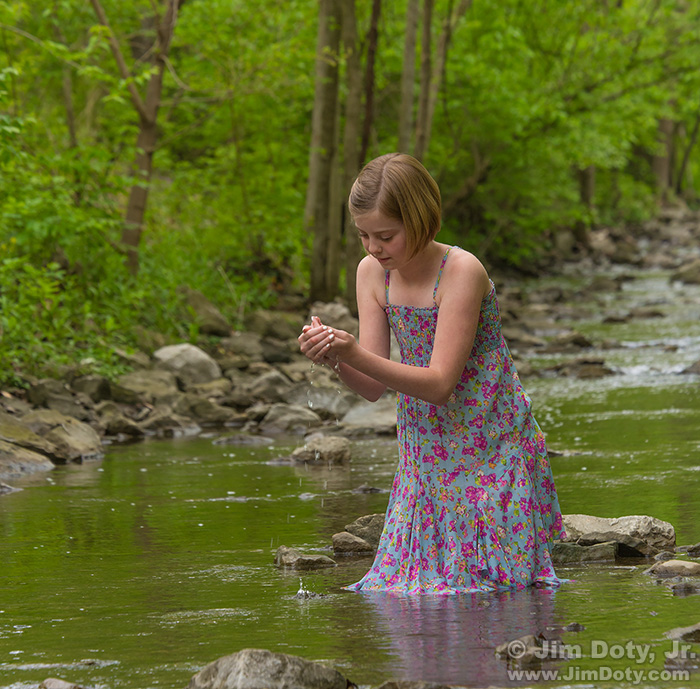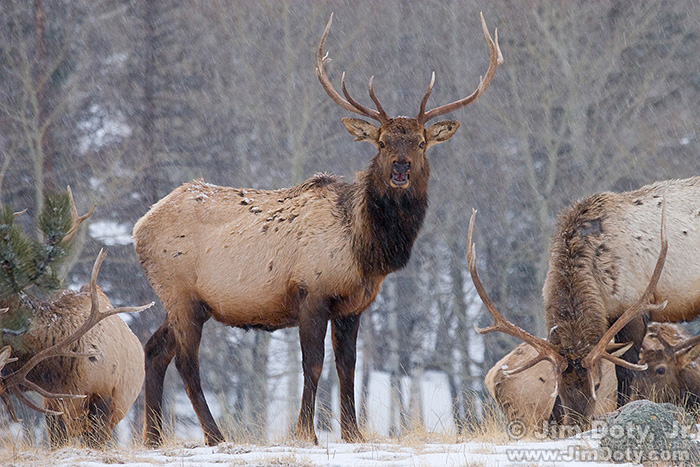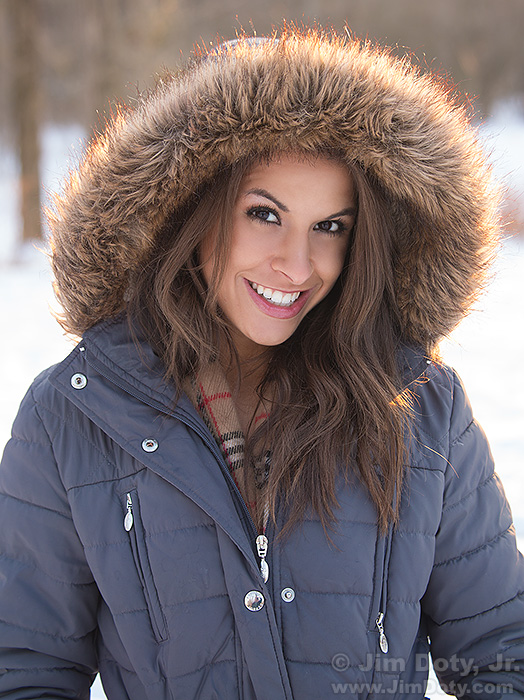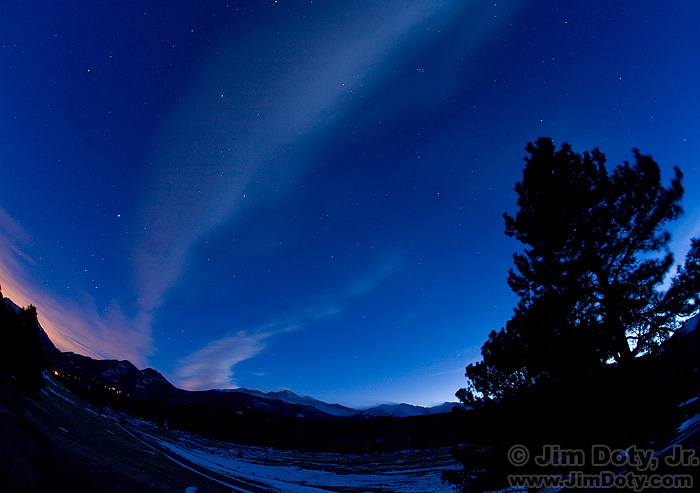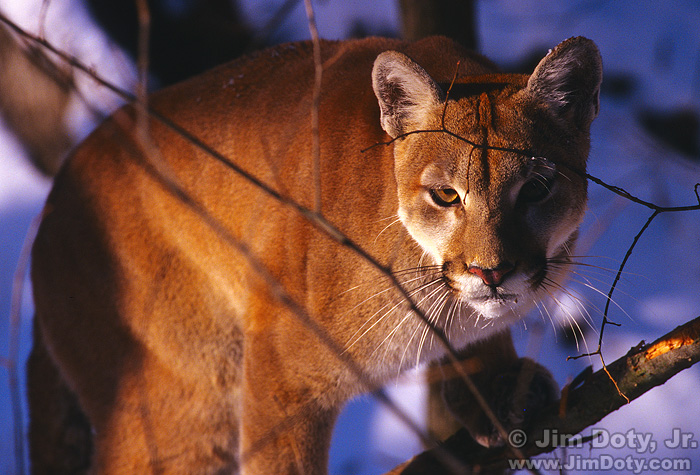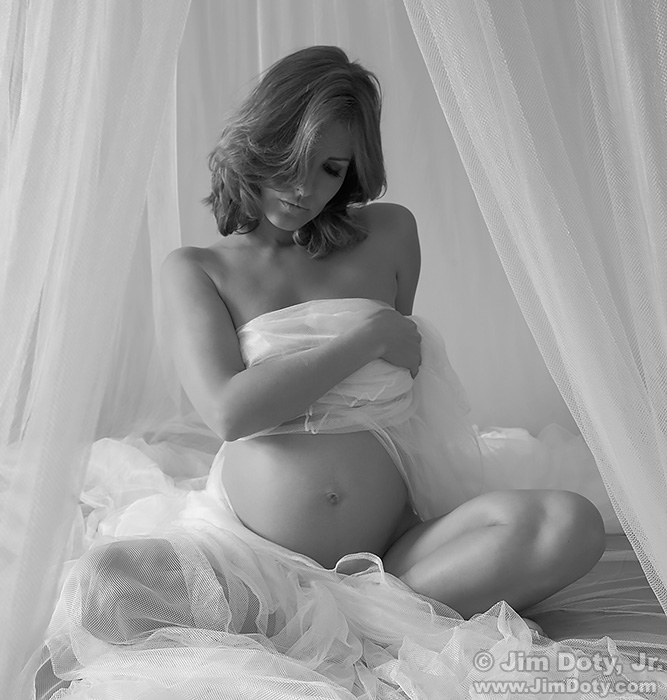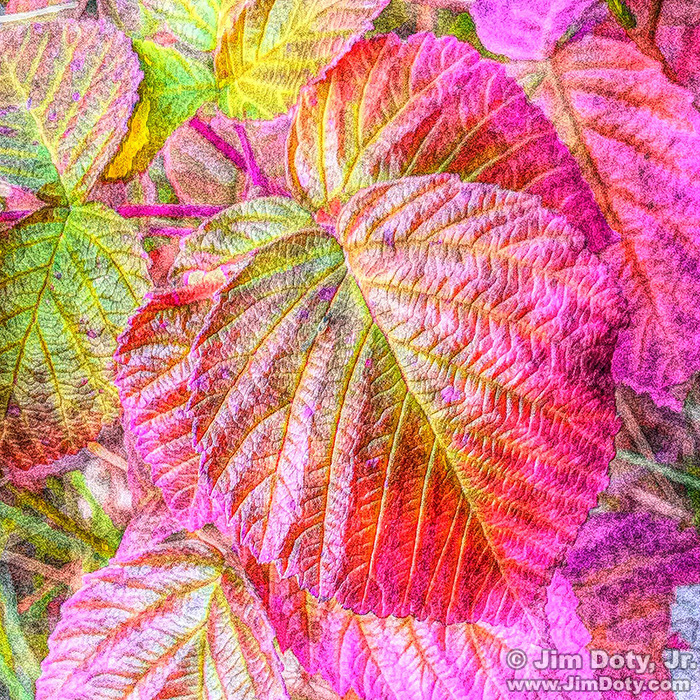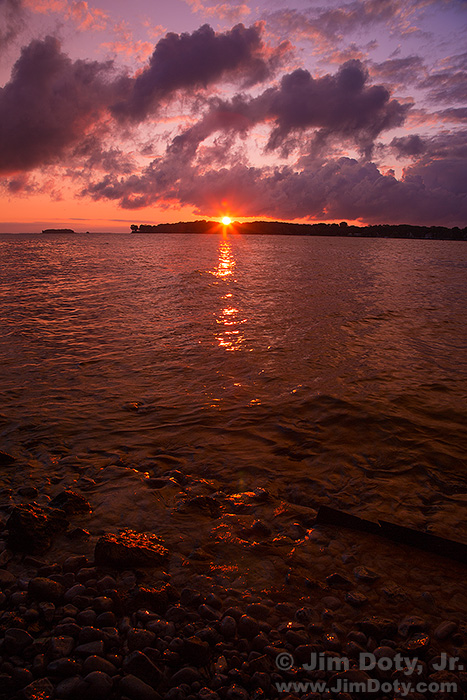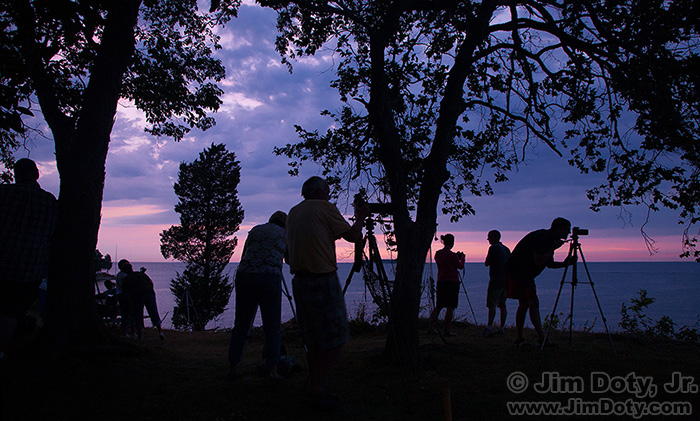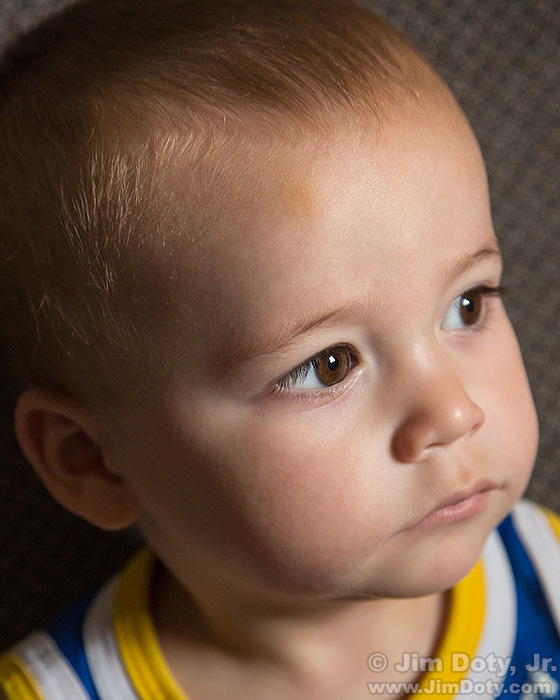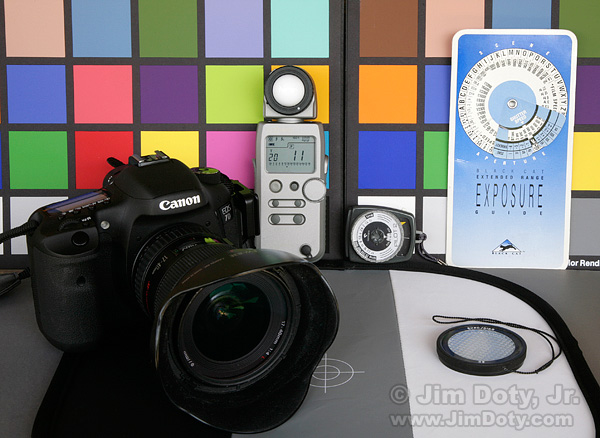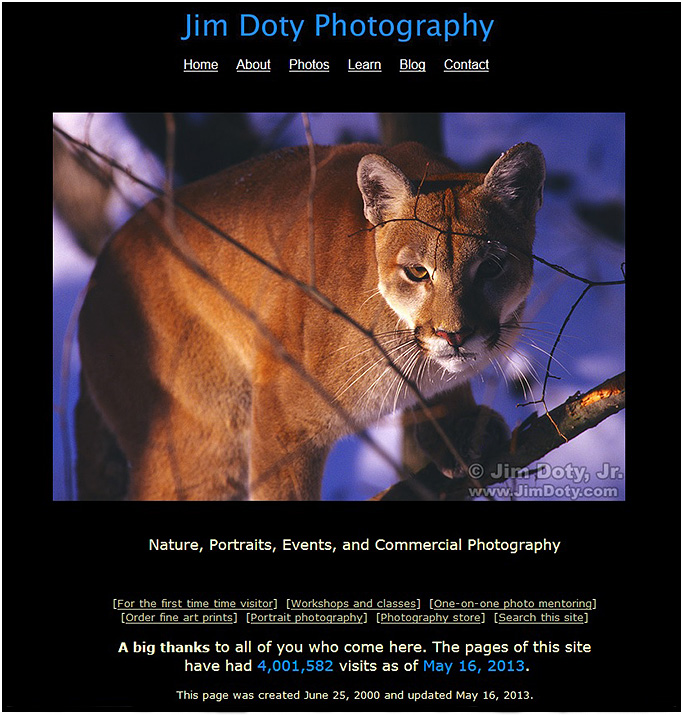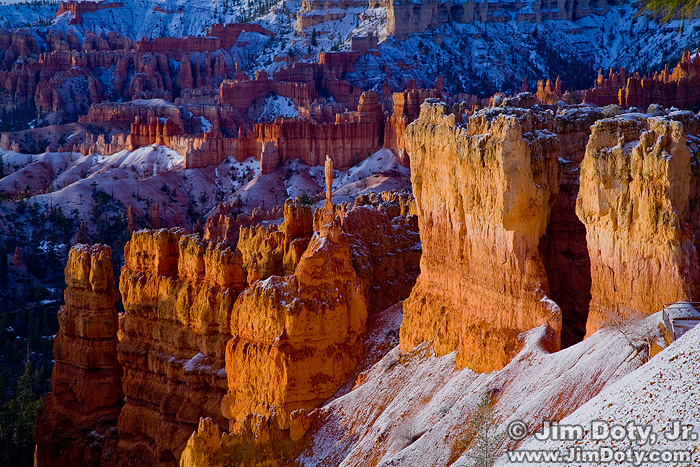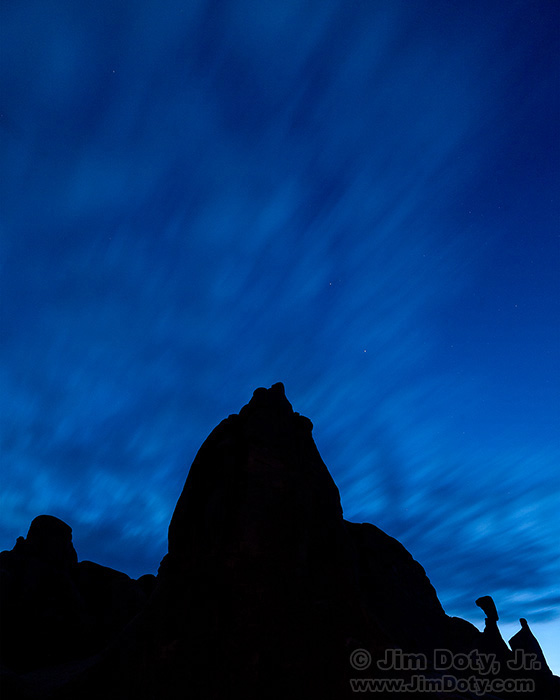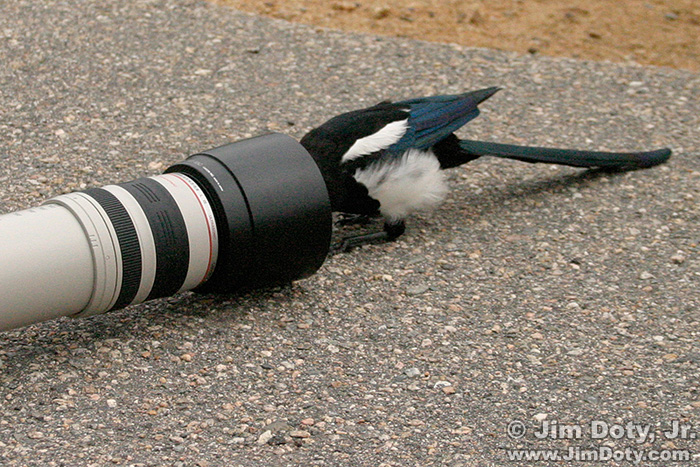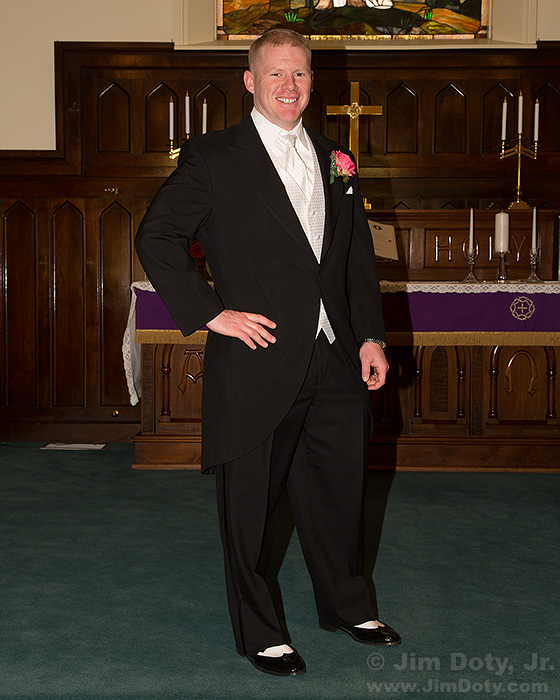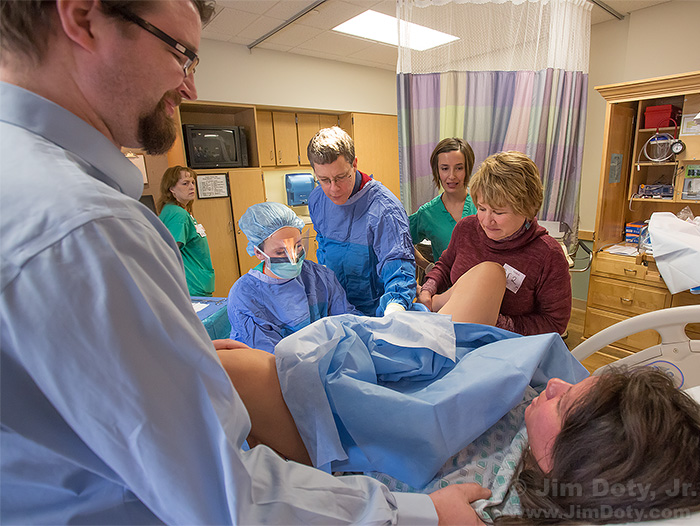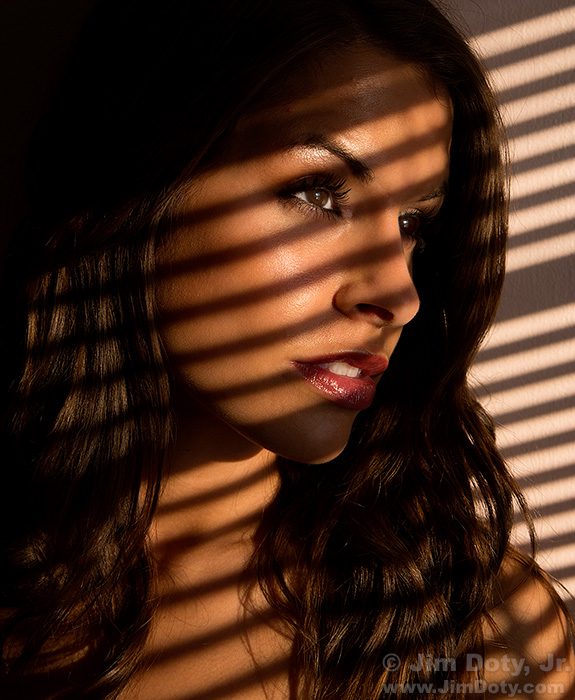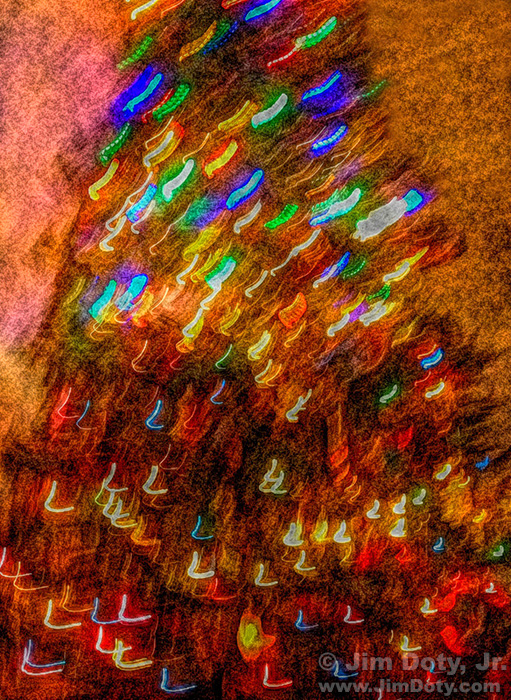From Lincoln’s Second Inaugural Address, March 4, 1865.
Portrait in the Park #2
Metering Evening Winter Scenes
Just like metering daytime winter scenes, the key to metering evening winter scenes is knowing what to meter and deciding how much exposure compensation to use.
Metering Wildlife in the Snow
Metering dark toned wildlife in the snow is a major exposure challenge. It is usually best to avoid large “burned out” areas (washed out, featureless white) in a nature or landscape photograph, but with properly exposed snow, the wildlife can be so dark as to lose all texture. On other hand, metering for the wildlife can burn out the snow.
Metering People in the Snow
The snow in a winter scene will often fool a camera meter into underexposing a photo, so here are the steps to take to get the right exposure. I throw in a few portrait suggestions too.
A February Night in Rocky Mountain National Park
Rocky Mountain National Park can be beautiful any time of year, including late February when I created this image. It’s not too late to catch the splendor of a RMNP winter, and February is a good month to go.
POTD: Minus 40 Degrees
With the wind chill in the minus 30s lately, I asked myself, “Who would be crazy enough to be outside in this weather?” Then I remembered taking this photo.
POTD: Expectations
To my eyes there are very few things on the planet that are as beautiful as a mother looking forward to the birth of her child. I love beautiful “baby bump” photography.
Looking for a Great Gift for a Photographer?
If you are looking for an excellent gift for a photographer, or for yourself, Digital Photography Exposure for Dummies is one of the highest rated photography books on Amazon.com, and one of the most comprehensive at 384 pages. It is highly recommended by both beginners and professional photographers.
Support the NPS!
During the government shutdown of our National Parks, some park service employees have come under fire in the media during circumstances which are not of their own making. While there may be a few grumpy people in the NPS (and anyone in any profession can say some some things in stressful moments they wish they could retract), in 30 plus years of taking photos in our National Parks I have had many excellent encounters with the hard working members of the NPS.
Finding the Peak of Fall Color at the Best Locations
Fall color is sweeping the country. To make the most of it, you want to be at the right place at the right time. With some help from the internet, I will help you find the best fall color locations and arrive at the peak of the season.
iPhone Art with the Painteresque App
I take pictures with my iPhone just for fun. And that includes altering the photos, like the one above, with some of my favorite iPhone apps.
POTD: Sunrise, Gibraltar Island, Lake Erie
This sunrise photo was taken at last year’s outdoor photography workshop hosted by OSU’s Stone Laboratory on Gibraltar Island. The workshop this year starts tomorrow.
Looking Forward To A Great Photography Weekend
Jeremy Bruskotter and I will spend this weekend with a group of eager and excited photographers. It is OSU’s annual outdoor photography workshop at Stone Laboratory on Gibraltar Island.
OSU’s Photo Workshop – August 9-11, 2013
OSU’s Prestigious Stone Lab is hosting the workshop “Capturing the Wonder of the Outdoors”. This is your chance to take your nature, landscape, and wildlife photography to the next level. This is an intensive weekend that combines class sessions with hands-on field trips. Join us August 9-11 on Ohio State University’s scenic Gibraltar Island near Put-in-Bay, Ohio. There is still time to register.
POTD: Backyard Portrait on a Sunny Day
Sunlight is usually too harsh for portraits so I try to avoid full sun on the face when shooting outside. My usual choices are to shoot in the shade or put the sun behind my subject (as in the case of this photo).
OSU’s Photography Workshop: “Capturing the Wonder of the Outdoors”
OSU’s Prestigious Stone Lab is hosting the workshop “Capturing the Wonder of the Outdoors” This is your chance to take your nature, landscape, and wildlife photography to the next level. This is an intensive weekend that combines class sessions with hands-on field trips. Join us August 9-11 on Ohio State University’s scenic Gibraltar Island near Put-in-Bay, Ohio.
POTD: Window Light Portrait
One of my grandsons was sitting next to me in my office looking intently at photos on my computer monitor. The moment was too good to miss so I grabbed a camera.
May Photo Contest Winner at Midwest Photo Exchange
I have never entered a photo contest before, but I responded to a request to enter the May photo contest at Midwest Photo Exchange (MPEX). The theme was “Spring” so I submitted an early April photo of California Poppies. Photographers from all across the United States entered photos. Winners were announced June 3 and I won the “People’s Choice” award for the photo that was voted for the most by other photographers and visitors to the site. This is a first for me and I am thrilled!
Using Reflected Light Meters, Part One
In auto exposure modes, your camera meter is perfectly designed to give you “average” exposures in average situations, but it can’t give you the “ideal” exposure for subjects of all colors and tones in every situation. If you want to get the best possible exposure, you have to take the camera off “autopilot” and control the metering yourself.
4,000,000 Page Views! Fine Art Print Sale!
As of May 16, 2013, JimDoty.com had 4 million page views. I don’t check my site stats very often so I just figured this out today. So I am having a celebration today and a print sale for the next 10 days.
Why Is Exposure So Important?
Why is exposure so important? Because taking control of the technical side of exposure is essential to empowering your creative vision. In the words of National Geographic photographer, Dewitt Jones, “Regardless of where you are in your photography; beginner, advanced amateur, or professional; vision without technique is blind. No matter how beautiful the conception, a good image will not manifest without good technique.”
The “One Sunrise Per Day” Limit
For landscape photographers, the “one sunrise per day” limit can be a real challenge, especially when you have several excellent locations to choose from. The same goes for the “one sunset per day” limit. Sunrise and sunset usually have the best light of the day. Photography would be so much easier if we had a couple of sunrises and sunsets per day.
POTD: Park Avenue at Twilight, Arches National Park
Don’t put your camera away after sunset. There are lots of photographic possibilities as the sky deepens into evening twilight.
The Big Switch from Canon to Nikon
Update April 2: Yesterday was April Fool’s Day. I’m not selling my Canon gear (blame the idea on Art Morris, the world class bird photographer). My apologies to the people who wrote and wanted to buy my Canon gear. The Canon history in between the first and last paragraphs is accurate and I really did buy my first autofocus lens long before I bought my first autofocus body.
I have been so impressed with the latest Nikon cameras (which have edged out Canon in the technology race) that I’ve decided to switch to Nikon gear. It was a hard decision.
Continue reading
Groom’s Portrait: Great Color Balance Right Out of the Camera
Sometimes getting the right color balance is easy with the right camera settings. When I opened this image in Adobe Camera Raw (ACR) I didn’t need to change a thing. After the bride’s portrait, this was a relief.
POTD: The Baby is On the Way!
How to Create a Portrait Using Window Blind Shadows
One of the things I like about winter is the sunlight streaming through one of my studio windows at a low enough angle to create window blind shadows portraits. In the summer the sun is too high for me to do this and get the angles I want.
Never Underestimate Your iPhone Camera
I never thought I would sell prints from my iPhone. I was wrong.
Metering Wildlife in the Snow
Metering dark toned wildlife in the snow is a major exposure challenge. It is usually best to avoid large “burned out” areas (washed out, featureless white) in a nature or landscape photograph, but with properly exposed snow, the wildlife can be so dark as to lose all texture. On other hand, metering for the wildlife can burn out the snow.


